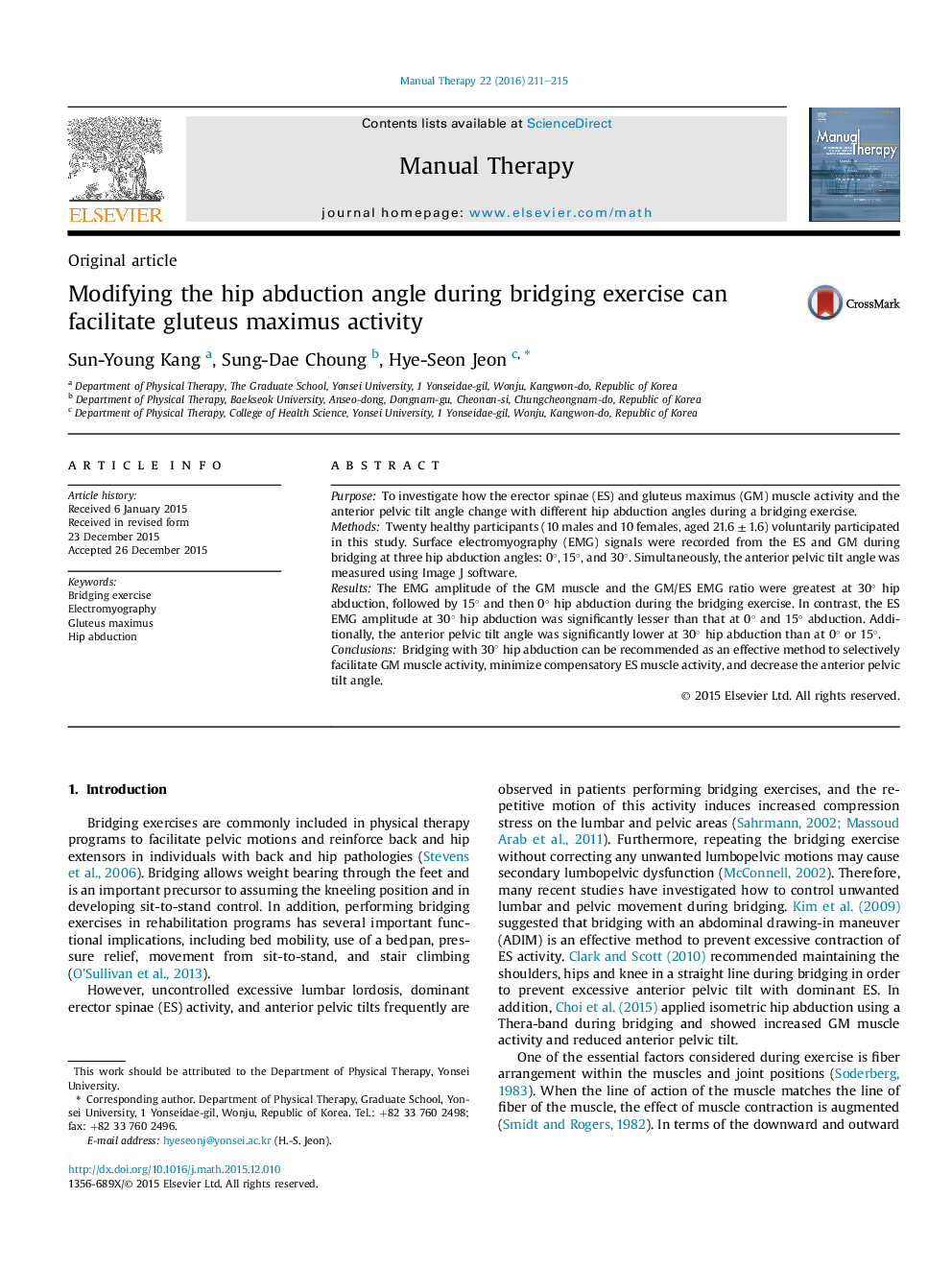| Article ID | Journal | Published Year | Pages | File Type |
|---|---|---|---|---|
| 2624949 | Manual Therapy | 2016 | 5 Pages |
•Gluteus maximus activity was greatest at 30° hip abduction during bridging exercise.•The erector spinae EMG amplitude at 30° was lower than at 0° and 15° hip abduction.•The anterior pelvic tilt angle was lower at 30° than at 0° or 15° hip abduction.
PurposeTo investigate how the erector spinae (ES) and gluteus maximus (GM) muscle activity and the anterior pelvic tilt angle change with different hip abduction angles during a bridging exercise.MethodsTwenty healthy participants (10 males and 10 females, aged 21.6 ± 1.6) voluntarily participated in this study. Surface electromyography (EMG) signals were recorded from the ES and GM during bridging at three hip abduction angles: 0°, 15°, and 30°. Simultaneously, the anterior pelvic tilt angle was measured using Image J software.ResultsThe EMG amplitude of the GM muscle and the GM/ES EMG ratio were greatest at 30° hip abduction, followed by 15° and then 0° hip abduction during the bridging exercise. In contrast, the ES EMG amplitude at 30° hip abduction was significantly lesser than that at 0° and 15° abduction. Additionally, the anterior pelvic tilt angle was significantly lower at 30° hip abduction than at 0° or 15°.ConclusionsBridging with 30° hip abduction can be recommended as an effective method to selectively facilitate GM muscle activity, minimize compensatory ES muscle activity, and decrease the anterior pelvic tilt angle.
